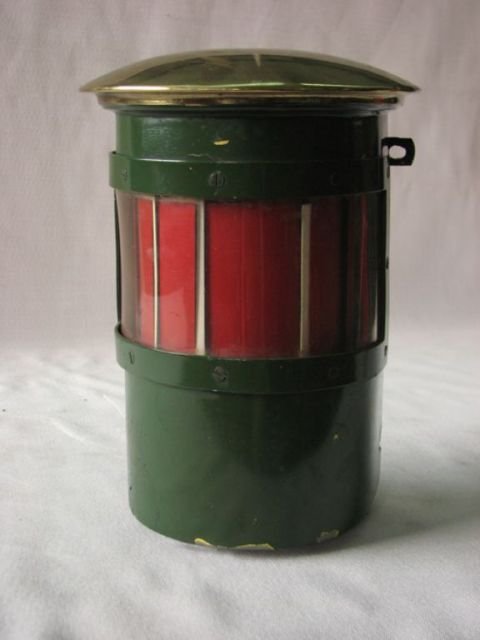RAILWAY SEMAPHORE SIGNAL REPEATER

-
Item owner - FNM
-
Category - FNM Collection
-
Inventory - 0223
-
Author -
-
Dimensions - height 26 cm; diameter 14.5 cm
-
Dating - 1940-1950
Sheet metal cylinder with brass dome. A plastic-coated rectangular window shows revolving screens in red, white, or red and white. Contains a screen movement mechanism composed of copper reels and iron plates.
Repeats the position of the semaphore signal protecting the railway line. Positioned adjacent to the Leopolder bells.
The semaphore signal operator checks the repeater to make sure the signal blade is in the desired position: red to indicate that the way is barred; white to indicate that the way is free; red and white to indicate unknown position of the signal or power failure.
Lamma or Castelli optical repeaters, the most commonly used varieties, are boxes containing a DC polarised relay with a permanent magnet connected to a screen which, in the window provided, appears white if the relay is excited in one direction, red if it is excited in the opposite direction, and half white and half red if it is not excited. The two extreme positions correspond to repetitions of the stop and go signals, while the third position is adopted by the relay when the control circuit is interrupted (absence of voltage, fault, blade in uncertain position).
In the go or uncertain position, the repeater also closes a specific contact which completes another circuit, that of the Leopolder bell.